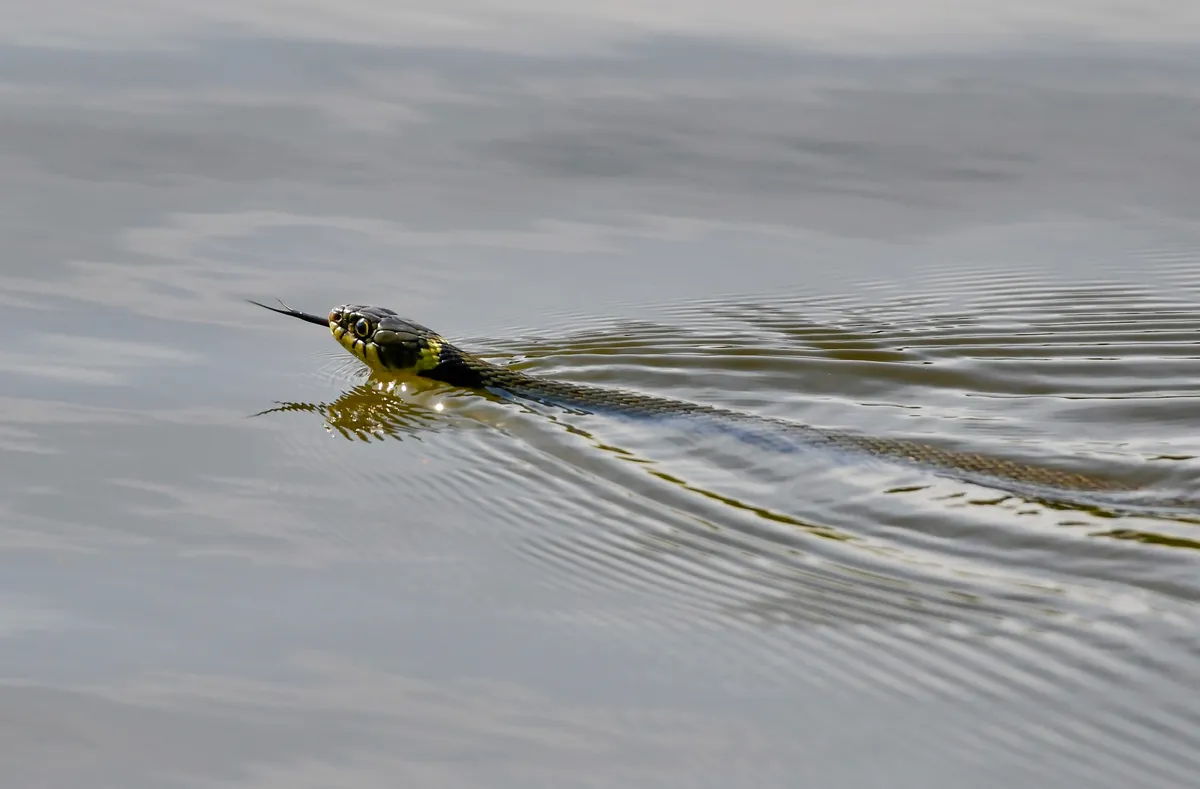Britain’s longest snake, the grass snake (Natrix helvetica) spends much of its time in wetlands, where it hunts frogs, newts, fish and small mammals, sometimes swimming underwater to catch its prey.
It is the UK’s most common and adaptable snake and can also be found in gardens, particularly compost heaps.
If caught, a grass snake will spray a liquid from the cloaca – a cavity at the end of its digestive tract. This has a powerful smell, a rather heady mix of rotten fish, garlic and ground coffee, which will deter predators. The aroma lingers for many hours if it comes into contact with clothing.
When threatened, some snakes will even feign death, with their mouth agape and tongue hanging limp, to accentuate the notion that they are not worth eating.
Interested in learning more about British wildlife? Check out our guides to snakes, frogs and toads, and deer.
What does a grass snake look like?
Grass snakes are green in colour, ranging from lime to deep olive, with a distinctive yellow collar (after which they are also named), faint black stripes and pale bellies that are marked with dark scales unique to the individual.
How big is a grass snake?
Our largest native reptile, the grass snake can grow to a length of 1.5 metres, with larger specimens reported.
- Smooth snake: diet, habitat, identification and distribution
- Adder guide: diet, habitat, identification and distribution
Are grass snakes dangerous?
Grass snakes are not dangerous to humans. They are non-venomous and shy, usually fleeing when disturbed. Though they may hiss or play dead if threatened, they rarely bite. They are protected by law, so should not be harmed or disturbed if encountered in the wild.
Grass snake distribution
Grass snakes are rarely found north of the Scottish border, although climate change could encourage a gradual spread north. Milder winters might impact their ability to hibernate, though. Stirring too soon only to be stung by a late winter blast. A peril facing all of our hibernating species.
For now though, the grass snake remains the most likely serpent to encounter in England and Wales.

What do grass snakes eat?
Grass snakes are not venomous but are ambush predators and their favoured diet is amphibians, although they will also eat small fish, rodents and birds.
Grass snake habitat
Grass snakes are known for their love of water and are excellent swimmers.
Away from water, grass snakes are familiarly found around compost heaps. They are oviparous and the microbial fermentation that occurs within rotting vegetable matter is ideal for incubation of their eggs.
The eggs themselves are around 25mm long and are laid in clusters of 10 to perhaps 40, and generally hatch in late August and early September. The resulting hatchlings are around 15cm in length and are immediately independent.
Top image credit: Getty
More wildlife from around the UK
- It weighs as much as house cat, has a wingspan the size of door and can hit 100mph when hunting - that's one formidable predator
- When a trail camera was set up on a riverbank in Somerset, it captured something "amazing"
- Are there any killer whales in UK waters?
- Enormous ocean giants: Discover 10 of the UK’s largest sea animals





